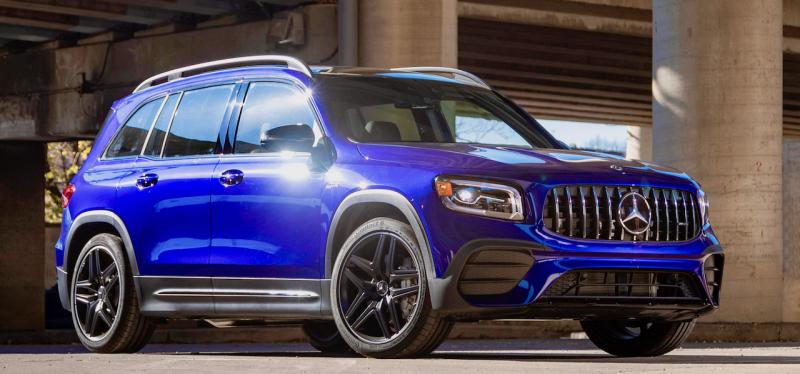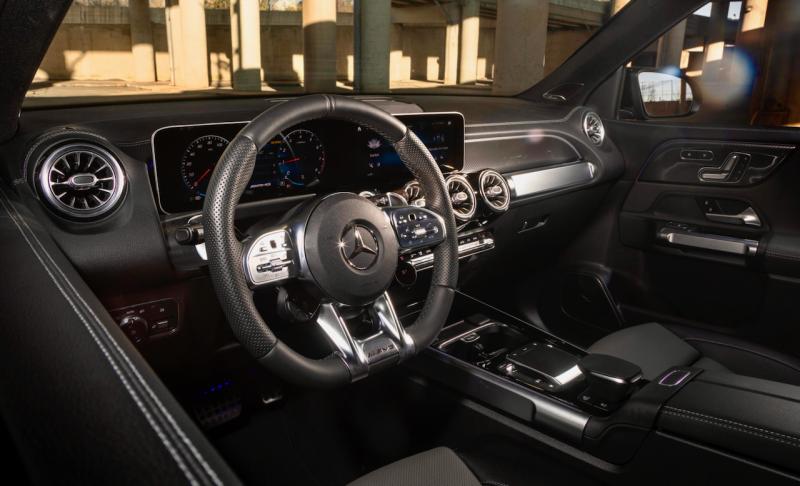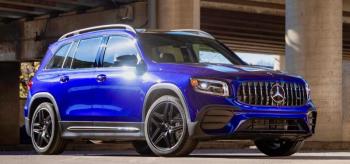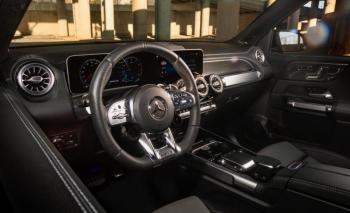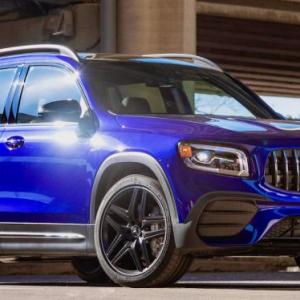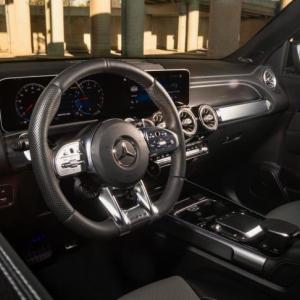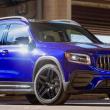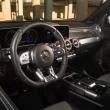AMG GLB35 4Matic
It’s a baby Benz! Apologies, Mercedes, but I can’t help thinking of it this way. The fact that it’s an AMG, a hot-rodded Merc, only makes it worse because instead of fearsome, it seems almost . . . cute. Like a Rottweiler puppy that hasn’t yet figured out that it’s, well, a Rottweiler.
AMG stands for Aufrecht, Melcher and Grossasbach, as in Hans Werner Aufrecht and Erhard Melcher, doing business in the southern German town of Gross Asbach. In the early 1960s, the two men were engineers at Daimler-Benz (now the parent company of Mercedes-Benz) developing the company’s 300 SE racing engine. Said engine became hugely successful, but the company had one of its periodic fits about racing and withdrew from motorsports (temporarily; M-B is now a powerhouse in Formula One).
Aufrecht and Melcher, however, saw an opportunity and decamped to go into business for themselves as Aufrecht Melcher Grossaspach Ingenieurburo, Konstruktion und Versuch zur Entwicklung von Rennmotoren. That is, AMG Engineering Office, Construction and Testing for the Development of Racing Engines. Under this catchy name, they began to convert ordinary luxurious Mercedes-Benz sedans into extraordinary speed machines that were still luxurious.
The first AMG I encountered was their 1986 E-Class coupe armed with a 5.0-liter, 32-valve V-8 and affectionately known as “The Hammer.” With a reported 375 horsepower, it ate the vaunted BMW M5 sedan’s 282-horsepower lunch. As I recall, the Hammer lacked the BMW’s balance and precision, but no one could argue with its heroic, for the times, power output.
Long story heavily condensed, AMG prospered and, on January 1, 2005, M-B (it was then DaimlerChrysler, but never mind) completed its acquisition of AMG. Today, there’s a separate Mercedes-AMG plant in Germany that employs more than 2,000 people building more than 50 specialty Mercedes models that wear AMG badges. This small GL-Class SUV is one of them.
No one would call it a hammer, though. We no longer regard 302 horsepower and 295 pound-feet of torque as anything to ooh and aah about; a Toyota Camry now can have 301 horsepower. That’s from a big (3.5-liter) and relatively lazy 6-cylinder engine, while the GLB35’s power comes from a small (2.0-liter) turbocharged Four, which gives off a strong vibe of urgency, aided and abetted by a mildly raspy exhaust note.
Another arrow in this little SUV’s quiver is a genuine dual-clutch automated gearbox with eight forward speeds (and one in reverse) and shift paddles on the steering wheel. The paddles are unnecessary—the computer assigned to shifting gears was properly programmed—but they’re nice to have, and they’re another signal of this vehicle’s intent.
Add a stiffer, lower ride than the base GLB25, responsive steering and a ton of visual performance cues, from the big, black wheels to the AMG grille and badges, and voila, the GLB35. It’s not just a classy grocery-getter, it’s for Friday-night blasts up to the ski condo and then—4Matic being Mercedes-speak for all-wheel drive—getting back to work early on Monday, even if it’s snowing (having fitted proper tires all around, of course).
Other AMGs may be more powerful—up to 831 horsepower—and larger, faster and more “serious,” but this one is not all that pricey, for a Mercedes-Benz and especially for an AMG: It starts at a reasonable-sounding (especially today) $49,950. Of course, it can be optioned up to more than 60 grand, but this one, well equipped, rang in at $58,075. It lacks only a sunroof and rear-crossing alert.
Our world today is awash in small SUVs; what the AMG GLB35 has that most of the others lack is personality. It’s fun, even rewarding, to drive and it always conveys a sense of specialness. If it still seems a bit eager puppy-ish, it lacks the death-star attitude and eye-watering price of other AMG SUVs such as the GLE 63S.

